Editor’s note: This article was originally published on LDSLiving.com in August 2022.
While we don’t often hear stories about pets from the pulpit at general conference, it has happened a time or two over the years. And with just a little more digging, we found several stories of Church leaders and their beloved pets. From the Prophet Joseph Smith’s faithful dog sleeping by his side in jail to President Thomas S. Monson rounding up stray puppies as a child, these stories will melt your heart and make you want to give the nearest dog a big hug.
Presidet Joseph Smith and Old Major
An article on the Church’s website tells us a bit about Joseph Smith’s pet dog—and the article’s title is all we could ever ask for: “Praise to the Man’s Best Friend.”
Here we learn that Prophet Joseph was given an English mastiff while on the march with Zion’s Camp. An older member of the camp feared that spies would harm Joseph while they marched and offered the dog as protection.
“The dog was greatly attached to Joseph and was generally by his side, keeping watch over everything that approached the camp,” George A. Smith, who was also with the camp wrote.
The dog was called Old Major and became a faithful, protective companion for Joseph for the rest of the Prophet’s life. And it sounds like Joseph took good care of him in return. A man named Aaron W. Harlan wrote of a conversation he had with Joseph: “I have [eaten] with him at his table and played with his dog, and on noticing the dog was getting old, I said to Mr. Smith, ‘Your dog is unusually fat.’ ‘Yes,’ said Mr. Smith, ‘he lives as I do and shall as long as we both live.’”
Joseph’s great-granddaughter wrote that when Joseph left Nauvoo to go to Carthage, Old Major, seeming to sense something was wrong, refused to go back home and instead went along to Carthage. While Joseph was imprisoned, Old Major “could not be separated from him and for months when he slept that dog always remained awake by his side.”
Scholar Alexander L. Baugh presented at a session of the Mormon History Association Conference and explained what happened with Old Major after that:
“At some point the dog was probably taken back to Far West, possibly by Emma during her last visit to the jail on January 21, 1839, and the fact that the Liberty prisoners made an attempt to escape the jail on February 7 suggests that Old Major was no longer there. While in Liberty Jail, Joseph clearly missed Old Major as evidenced by the fact that Joseph inquired about him in his March 21 and April 4 letters to Emma. Old Major was still alive by the time Joseph was murdered and would have been about 10 years old if he was a young dog at the time he got him in 1834.”
Could anything be sweeter than the Prophet inquiring after the well-being of his dog? To help paint a picture in your head of the Prophet with his dog, here is a photo of English mastiff that could have resembled Joseph’s:
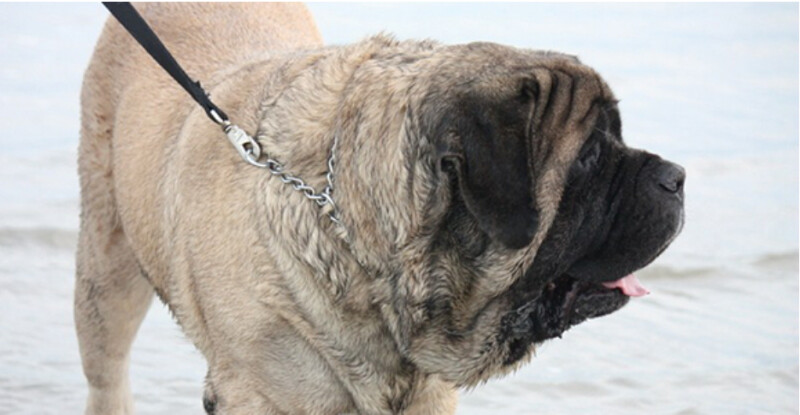
President Thomas S. Monson and Duke
President Monson was certainly a dog lover, no doubt about it. In general conference in 2002, he talked about his love for dogs as a child and how he once brought home “six dogs of varying sizes.” His biography, To the Rescue, tells that story in greater depth than what he shared in conference:
Tommy’s childhood seemed to come straight from the cover of The Saturday Evening Post, with a Norman Rockwell kind of charm. He was the boy with the tousled blond hair, the broad smile, a fishing pole in one hand, marbles in the other, and a dog yapping at his feet.
He has always believed every boy should grow up with a dog of his own. With his cousin Richard Carter, he would set out in the neighborhood with a wagon that had an orange box precariously positioned on top where they could stow stray dogs. One afternoon they locked the captured dogs in Tom’s family coal shed, not sure what to do with them next.
His father came home from work and, as was his habit, took the coal bucket out to the shed to fill it. When he swung open the door, he was nearly knocked to the ground by six dogs wanting their freedom. “As I recall,” Tom explained, “Dad flushed a little bit, and then he calmed down and quietly told me, ‘Tommy, coal sheds are for coal. Other people’s dogs rightfully belong to them.’” Not only did Tommy learn about the inadvisability of borrowing other people’s pets, he learned a lesson from his father “in patience and calmness.”
Another time Tom “found” a mangy dog while staying at the family cabin at Vivian Park. It belonged to a local sheepherder, but Tommy hoped he wouldn’t miss it. He was wrong. The man came to the cabin looking for his dog, and Tommy reluctantly handed it over. “Tommy,” said the man, “you wouldn’t want this dog. He’s part coyote.”
But Tommy did want the dog—or any dog, for that matter. Finally his Uncle John found him one. The mongrel was not much to look at. Evidently abandoned in the desert, he was “a sorry mess, with a cast on one leg, a splint on another, and a broken tail.” But Tommy accepted him appreciatively and named him Duke. Boy and dog became fast friends.
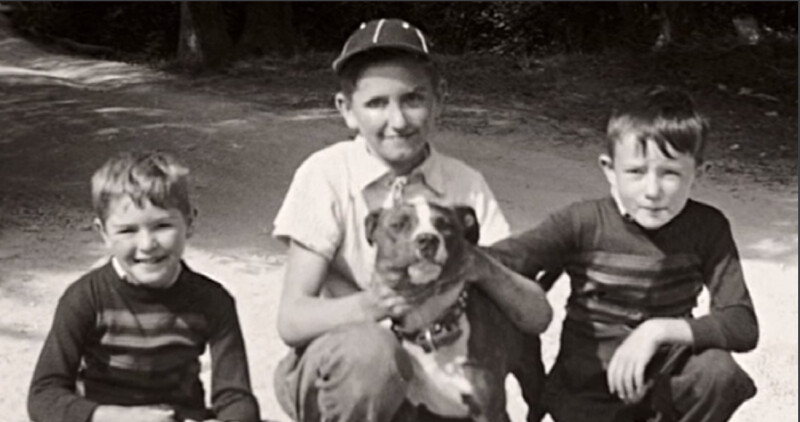
President Monson’s love for dogs wasn’t limited only to his childhood pal Duke. His biography goes on to tell a story of when, as a recently married man, he sought out another pet dog:
Early in his marriage to Frances he ran an ad in the classified section of the newspaper seeking a brown and white English springer spaniel. He got a phone call from a man who asked what exactly he was looking for in a dog. Tom explained that he wanted a dog he could train for hunting, and the man said, “You really don’t want a springer spaniel. What you want is a new breed of dog called a German shorthaired pointer.” The man proceeded to extol the virtues of the breed, indicated that he just happened to have a litter, and offered Tom his pick. The caller was a good salesman; Tom ended up buying the pup for what he considered a steep price: twenty-five dollars. He named the dog Freck von Windhausen and called him Freck.
Tom tried unsuccessfully to teach Freck to “heel” in walks around the block. His granddad, sitting on the swing, caught sight of him coming around for the third or fourth time. He hollered, “Tom, what did you give for that little dog?”
Tom was not going to tell him twenty-five dollars. He reduced the price, responding, “Five dollars.”
His grandfather’s reply was scorching: “Ya darn fool. You paid four dollars and six bits too much!”
That assessment certainly seemed right. The dog was no good at hunting or much else; he was high-strung, and he churned the backyard up in dust. Tom and Frances’s young son Tommy could not compete for a place to play. Frances finally announced, “The dog has to go.”
First, Tom gave Freck away to a man who within days was back, saying the dog had chased the repairman servicing the kitchen appliances. He gave him to another, who returned him with the report, “He howled all night and the neighbors complained.” Finally, one of Tom’s business associates offered to take the dog to a farmer in Idaho, who later reported he was “the best hunting dog ever!”
We couldn’t find anything to report on whether or not President Monson ever found a replacement for Freck, but he did later have two pet rabbits.
And as a fun bonus, here is an adorable picture of young President Monson riding a horse.
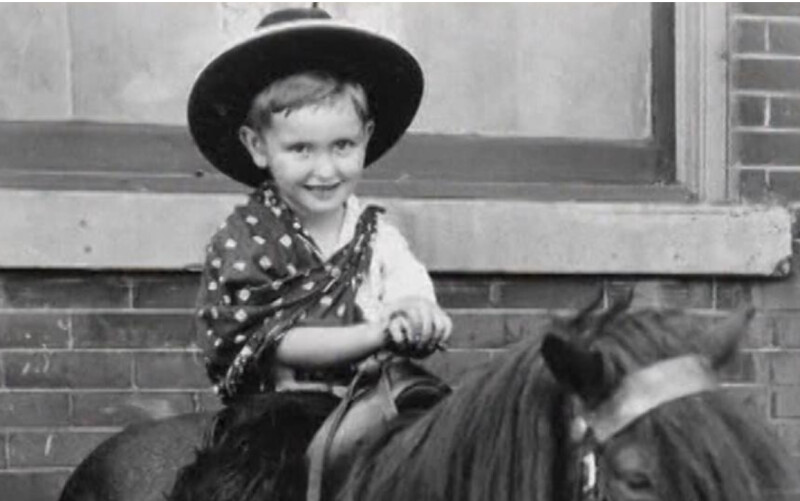
President M. Russell Ballard and Scottie
President Ballard had a collie as a child, and tell us this paragraph from his biography, Anxiously Engaged, isn’t setting the scene for your next heartwarming Sunday night movie:
As a student at Wasatch Grade School, one of Russell’s daily highlights was walking with Scottie—a black, brown, and white collie—to and from school. Scottie walked with Russell down Butler Avenue to University Street and across Reservoir Park to a red light at South Temple and Thirteenth East. The dog would sit and watch as Russell crossed at the light and walked the next three blocks to the school. When the school day was over, Russell would often find Scottie waiting by the stoplight to walk him home. Needless to say, boy and dog were inseparable friends.
I wish the biography gave us more details on that sweet friendship, but it does not. Here is a photo of President Ballard as a child, however, and a photo of the kind of collie he had. Hopefully this helps you picture the cuteness of this boy and dog relationship.
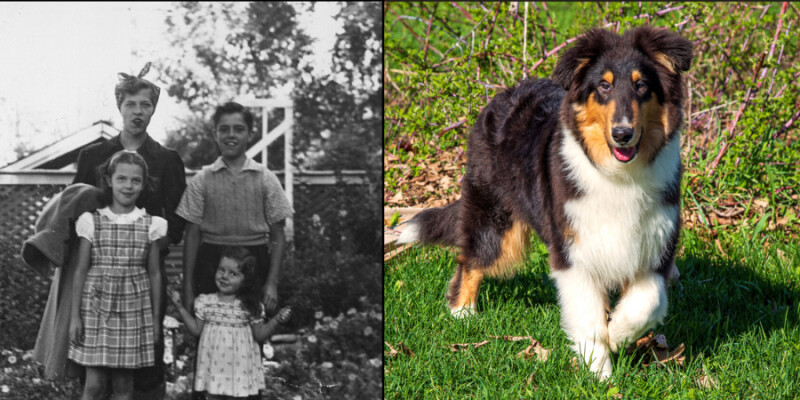
▶ You may also like: What the Apostles looked like as babies and children
Elder Gary E. Stevenson and the 102nd Dalmatian
In the October 2019 general conference, Elder Stevenson shared an adorable fiasco involving his son and their family dog. He said,
Years ago, I arrived home from work and was startled to see white paint splattered everywhere—on the ground, the garage door, and our red-brick house. I inspected the scene more closely and discovered the paint was still wet. A trail of paint led toward the backyard, and so I followed it. There, I found my five-year-old son with a paintbrush in his hand, chasing our dog. Our beautiful black Labrador was splattered almost half white!
“What are you doing?” I asked in an animated voice.
My son stopped, looked at me, looked at the dog, looked at the paintbrush dripping with paint, and said, “I just want him to look like the black-spotted dogs in the movie—you know, the one with 101 Dalmatians.”
I loved our dog. I thought he was perfect, but that day my son had a different idea.
Here is the picture Elder Stevenson shared of a black Labrador in conference:
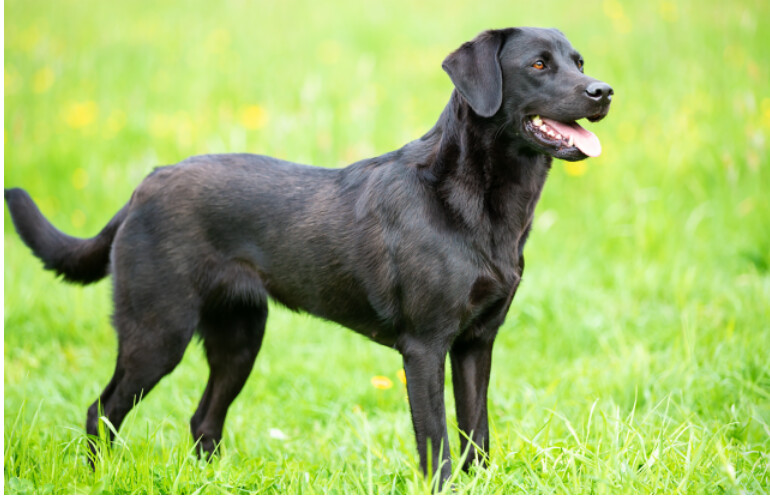
On a slightly related note, Elder Stevenson also shared an adorable picture of a dog in his April 2021 general conference talk. He told a story about a young boy named Minchan Kim in Korea who learned to choose the right. And if the story about Minchan wasn’t sweet enough, Elder Stevenson also showed us this picture of him:
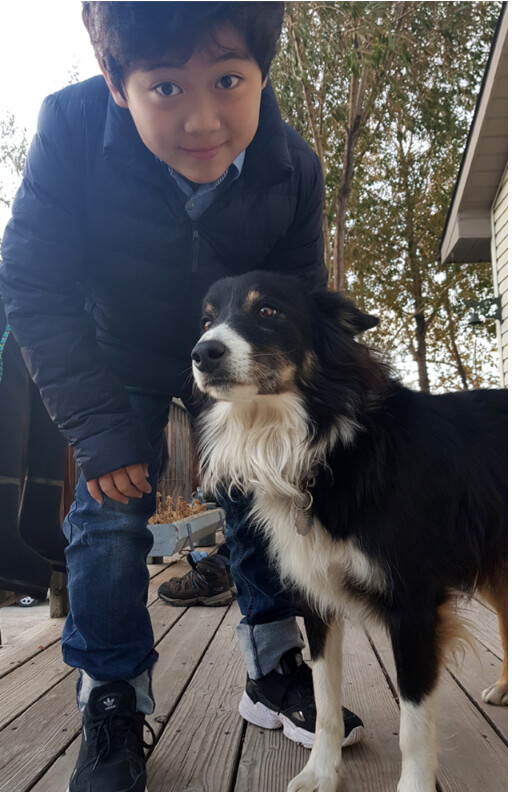
Elder Dale G. Renlund and Lady
When Elder Renlund’s daughter Ashley wanted a puppy, he and his wife, Sister Ruth Renlund, had very different ideas about what type of dog to get.
Elder Renlund told BYU Pathway Worldwide students in a devotional that he wanted a German shepherd or Labrador or pit bull. “That way, when I walked the dog people would say, ‘There goes Dale with that masculine dog,’” he says. But Sister Renlund thought they should get a smaller dog and give it a more feminine name.
“When these kinds of differences in opinion occur in marriage, you learn that you rationally discuss the situation, evaluate advantages and disadvantages and resolve the conflict. In this case, we did so and eventually came up with a compromise. We got a toy poodle and named her Lady,” Elder Renlund says.

Lady was very good at playing fetch, Elder Renlund reports, and would play at any time for as long as someone was willing to throw the ball. One day, Elder Renlund thought he would try throwing two balls for Lady and see what happened. It seems the poor puppy became confused: she ran and picked up the first ball, but then saw the second ball, and ran to pick that one up instead. But then she saw the first ball again and dropped the second ball. After a few more pick-ups and drops, Lady gave up on both balls and walked away. Elder Renlund made an analogy out of the experience for the BYU Pathway Worldwide student he was addressing:
“Two balls were one too many for our puppy, and it is the same for you,” Elder Renlund reminded students. “Keep your eye on the mission-critical balls that will bring you the greatest happiness—the gospel of Jesus Christ and your family. Do not neglect your personal, private, daily acts of devotion—prayer, studying the scriptures, and attending Church services. These actions will help you have the guidance of the Holy Ghost to help you succeed in your other goals.”
Brother M. Joseph Brough and Blue
Brother Brough was in the Young Men General Presidency and in 2017 told a story in general conference that will make any dog lover’s heart ache. Here is what he told the Church about his beloved childhood dog, Blue:
Around my 14th birthday, … I noticed different behavior on the part of my parents. Considering what I observed, I asked, “Are we going on a mission?” The shock on my mother’s face confirmed my suspicion. Later, in a family council, my siblings and I learned that our parents had been called to preside over a mission.
We lived on a beautiful ranch in Wyoming. From my perspective, life was perfect. I could come home from school, complete my chores, and be off hunting, fishing, or exploring with my dog.
Shortly after learning of the calling, I realized that I would have to give up my dog, Blue. I confronted my father, asking what I should do with Blue. I wanted to emphasize the unfairness of what God was requiring. I will never forget this response. He said, “I’m not sure. He probably cannot go with us, so you had better ask Heavenly Father.” That was not the response I had anticipated.
I began reading the Book of Mormon. I earnestly prayed to know if I had to give my dog away. My answer did not come in a moment; rather, a specific thought kept penetrating my mind: “Don’t be a burden to your parents. Don’t be a burden. I have called your parents.”
I knew what Heavenly Father required. That knowledge did not reduce the pain of giving my dog away. However, through that small sacrifice, my heart softened, and I found peace in seeking Heavenly Father’s will.
We couldn’t find a recorded ending to this story, but surely a boy who loved his dog as much as Brother Brough did would find a loving new home for Blue.
President David O. McKay and Scotty
We don’t know much about President McKay’s childhood dog, but a Liahona article does tell us he had one. Its name was Scotty, perhaps named in honor of the family’s Scottish and Welsh forebearers. An article published by BYU says that President McKay grew up on a family farm in Huntsville where he “developed a love of the outdoors, of animals, and of sports, which still characterize him.” When President McKay was only about 8 years old, his father was called to serve a mission in Scotland. Because the family had recently suffered the loss of two young daughters, his mother was expecting a baby soon, and running a farm takes substantial work, his father was hesitant to leave it all. But at his wife’s insistence he did accept the call to serve—but not before telling young David to “take care of mama.” Eight-year-old David assumed big responsibilities early in life, and we like to image his little furry friend Scotty trotting along his side to help.
Learn more about President McKay’s life in David O. McKay: Beloved Prophet.
President Howard W. Hunter and Daisy
In 1995, Friend article, we learn that President Hunter had a dog named Daisy as a child, among other animals:
Young Howard collected things: stamps, coins, and, especially, the eggs of birds—pheasants, meadowlarks, bluebirds, robins, and wrens—which he found while exploring the swamps and woods near his home. He loved animals. His dog, Daisy, a fox terrier, followed him wherever he went. His two favorite pet rabbits were Bunny Boo and Mary Jane. One of his very favorite things to do was spend the summer at his aunt and uncle’s ranch, where he rode horses, herded cows, and even slept in a haystack at night with his cousins.


Linda K. Burton and the Lost Dog
Linda K. Burton was Relief Society General President from 2012 to 2017, and in a devotional for young adults, she told a story about at time their family dog got lost—every pet owner’s worse nightmare. Gratefully, this story has a sweet and happy ending.
Our son is the oldest child in our family. He has five sisters and no brothers. Just before the birth of our third daughter, my husband promised our son a dog if this baby was another girl. When our baby girl was born, my good husband kept his promise. The dog became our son’s best friend. He loved that dog. But one day, the dog got lost. We searched and searched, but to no avail. We called the animal control officer. He didn’t give us much hope since we lived fairly close to the freeway. The officer felt that enough time had gone by that there was a good possibility that the dog had made its way to the freeway and been hit by a car.
We did our best to console our son when we shared what we had heard, but he was devastated. I remember inviting him to pray to Heavenly Father for comfort. Our sweet little boy looked me in the eye and said, “I’ve been praying and praying, Mom.”
A couple of days went by. Then early one morning there was a knock at our door. One of the children answered the door and came running to get me. I was concerned as I noticed a car parked in our driveway with the words “Animal Control” written on the side. The man at the door looked at me and said, “Mrs. Burton, I think I have something in my car that belongs to your son.”
My heart sank. I remember worrying that he had picked up our dog and that the dog might be dead or terribly injured. To my great delight, there was our dog in the back of the car—lively, well, and ready to bound out of the car and into the arms of our little boy.
I asked the animal control officer where he had found our dog. He said: “The most unusual thing happened this morning as I was leaving home. There, right in front of my house, was a dog that fit the description you had given me on the phone. The dog responded when I called her name. So I thought I’d bring her home and put your little boy’s mind at ease before he left for school.”
I know that the Lord answers sincere, tender, childlike prayers. Heavenly Father wants children to know He is there early in their lives so they will continue to trust in Him as they grow to maturity. Because children are generally filled with humility, they qualify to receive Heavenly Father’s promise as given in the Doctrine and Covenants: “Be thou humble; and the Lord thy God shall lead thee by the hand, and give thee answer to thy prayers.”
▶ You may also like: Will our pets be in heaven? Can they receive priesthood blessings? Exploring gospel questions about animals
Bonus
Elder Neil L. Andersen and the Black Labrador Retriever
This final story is not about Elder Andersen’s own dog, but this story he told in April 2011 about a scared black Labrador retriever in a French airport is far too sweet to miss:
While serving as a mission president in France, I would travel with Sister Andersen once a month to the airport to pick up the arriving missionaries. On one occasion as we stood waiting outside of the baggage claim area, we met a very interesting Frenchman who was also waiting. The difference was that while we were waiting for missionaries, he was waiting for his dog.
He spoke fondly of his large, black Labrador retriever, with great affection and respect, almost as we would speak of one of our children. I could sense that he treated the animal with love and kindness. The man had been transferred to the city of Bordeaux and until he could get settled in the right apartment he had left his dog in a kennel in his previous city. Now things had been properly arranged, and the dog was arriving on the same plane as our missionaries.
In my imagination I thought of what had transpired—from the point of view of the dog. I imagined that he had been treated like a king in his master’s home. He may have been allowed to jump on the sofas and sleep on the foot of his master’s bed. Maybe he even had his own shelf in the refrigerator, stocked with his own special food.
Then one day, without any explanation, he was suddenly behind bars, in a kennel with a cement floor and steel bars, his food pushed underneath the door to his pen. If a dog could connect the events together, this dog would have wondered: “What happened? Why am I here? What did I do?” He did not realize that his master had a plan for him, that they would soon be reunited, and that in the meantime, his master was paying for his kennel and his food, ensuring that he would be kept in a warm place out of the cold. All that time his master was preparing a place for him at an even finer house in Bordeaux.
Suddenly, looking through the glass into the baggage area, we could see workers rolling out a large crate. We could hear the barking of the dog inside. I could tell he was frightened and anxious. Again, in my mind I could imagine two men arriving at the kennel one day, taking the dog, and putting him in the crate. Soon the Labrador found himself in the belly of an airplane. Again he must have wondered what was happening. I could imagine his fear.
Now, at last, the crate was in front of us. Workers opened the door, and out came the beautiful Labrador. First he was nervous. His head was up, he was alert, and he was ready to defend himself.
Then suddenly the eyes of the black Labrador met the eyes of his master. Immediately, the dog’s behavior changed. His barking stopped and his tail started wagging. He jumped into the arms of his master and they embraced, a Frenchman and his dog reunited.
▶ You may also like: Elder Andersen’s powerful response to an Instagram comment about miracles


